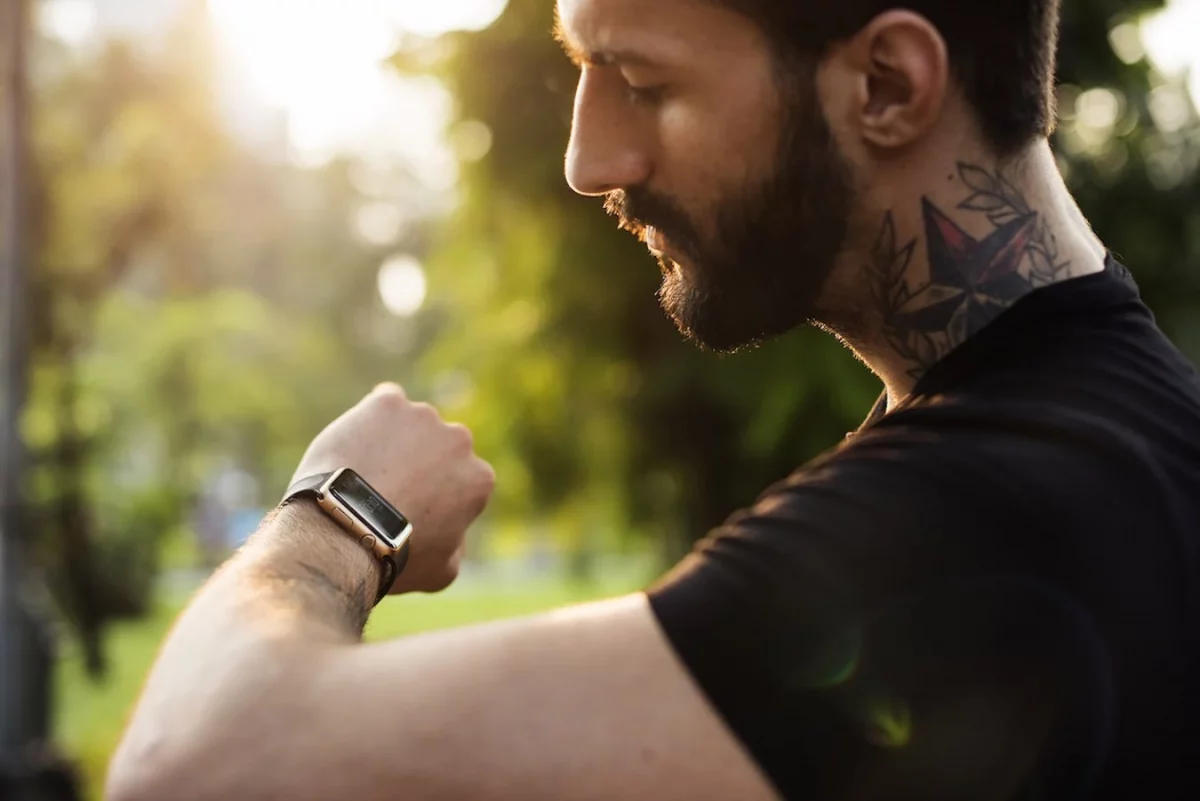Is the Apple Watch Calorie Counter Accurate? [We Find Out!]
The Apple Watch has become synonymous with fitness and well-being thanks to its extensive feature stack that supports and promotes fitness. One of these features is its calorie expenditure tracker.
The apple watch calorie counter is inaccurate because it cannot assess the user’s exact metabolic rate and the precise calorie expenditure while exercising. This was revealed in a Standford study of different wearables.
In this article, you’ll discover the different data points that are crucial to the Apple Watch’s calorie counter and what you can do to ensure that you get a calorie expenditure record that is closer to the true value. You will also learn how accurate the apple watch is when it comes to tracking calories and how off you can expect the average reading to be.
But first, let’s go over the nuances of calorie counting.
Wearables and Calorie Counting: A Brief Overview

Apple Watch is one of the most accurate calorie-counting wearables on the market yet is off the true value by a huge margin. Other wearables have an even worse record. To understand why wearables aren’t close to cracking the code on calorie counting, you need to understand how these devices operate by looking at various data points.
1. Movement/Activity
This data is collected by the movement sensors of different wearables, including the apple watch. Movement and activity are some of the easiest things to track, so almost all wearables can get this reading fairly accurately.
2. Weight and Height
Exercise and movement have different energy demands at different weight classes. Wearables that don’t build a user profile fail to take the user’s weight into account when estimating calories burned. Such wearables usually assume an average weight.
Ironically people who use calorie counters don’t usually have an average weight. Apple Watch uses a user’s own assessment of his weight and height. While this is better than assuming an average height or weight, users aren’t always accurate in judging their own size.
3. Gender
Women and men have different average metabolic rates. Most standard wearables take this into account, and the ones that don’t can be off by 90% when calculating active calories burned. The Apple Watch cannot distinguish trans women from cis women even though their metabolic rates differ.
If you declare yourself a female despite not being a cis woman, the watch will give you the calories you would have burned were you a cis woman.
4. Age
The next factor in calorie burn calculation is age. If a wearable doesn’t record your age, it cannot estimate your energy expenditure. Most wearables, including the Apple Watch, ask you for your date of birth. If your date of birth in your Apple profile is not accurate, you will not get an accurate record of calories burned.
5. Genetics
Finally, the factor that contributes to 40% of your calorie burn rate is your genetic makeup. If you’re genetically blessed with a fast metabolism, you burn more calories. Unfortunately, no wearable gadget can take this factor into account, which is why the overall calorie counting of every smartwatch is off by double digits.
Apple Watch and Calorie Counting
While the apple watch is proven to have an inaccurate calorie counter, its readings are the closest to the true calories burned. Wearable technology hasn’t yet reached the sophistication to accurately assess calories burned because a user’s genetic metabolic profile is not accessible to modern technology.
With sites like 23 and Me, DNA has become more accessible to technology. It is possible that in the near future, big tech companies will have access to users’ genetic metabolic rates. Until then, the apple calorie counter remains inaccurate.
How Accurate is the Apple Watch Calorie Counter?
According to a lab conditions study of Apple Watch calorie tracking, it has the lowest inaccuracy of most major wearables that track energy usage. Still, it can be up to 27% off the actual calorie usage.
That means that for every 100 calories you burn, your tracker might record 127 calories. On the other hand, it is possible to burn 127 calories and get a calorie-burn reading of 100 calories only.
Some calorie trackers are off by 43%, and a few can be off by as much as 90%. Apple has better calorie tracking because it considers a user’s age, sex, weight, and height, all of which dictate how many calories are burned per activity per hour.
How Does Apple Watch Calculate Calories?
Apple Watch takes your weight, height, gender, and age information and cross-references it against its library of a metabolic load of various activities to determine how many calories you’ve burned across different exercises.
Apple Watch’s metabolic load library contains the calories people burn per minute of walking. But this information depends on weight because an 80 lbs individual spends less energy walking than someone who weighs 120 lbs.
The watch takes this data from the user’s personal information, and its algorithm cross-checks it with the library to get the specific calorie-burn reading. The calories burned are then added to the record, and the movement tracker of the watch seeks out any indication of new activity to redo the same process.
Active Calories vs. Total Calories

Now that you know how Apple Watch’s movement tracker waits for moments of high activity to record the activity and cross-check it with its calorie-burn library while considering your age, size, etc., you might see that this process yields active calories. How does Apple get the total calorie count?
Active calories are calories burned during exercise, while total calories include the calories burned automatically without any activity. Apple Watch gets the inactive calorie-burn information from the user’s age, gender, and weight.
The following variables affect inactive calorie burn:
- Age – the younger you are, the more calories you burn just to exist. Older people burn fewer calories when they are inactive.
- Height – the taller you are, the more calories you burn without exercising. Shorter people don’t require as much energy when not exercising.
- Gender – Men burn more calories without activity than women. On average, women have lower muscle mass than men of the same age. As a result, they require less energy to maintain their weight.
- Weight – As a rule of thumb, the heavier you are, the more calories you burn without activity. That’s why weight loss becomes harder the more weight you lose.
How to Improve Apple Watch Calorie Counter Accuracy?
To improve Apple Watch Calorie accuracy, you need to improve the accuracy of the information you feed to the device and offset its inherent limitations. You can do this by calculating the margin of error and updating your information.
Follow these tips to improve the accuracy of the apple watch calorie counter.
- Update your age, weight, and other personal information – by improving the quality of this data, you nudge the results towards higher accuracy.
- Turn on wrist detection – with wrist detection, your device can sense when it is not being used. This allows background heart rate, standing activity, etc., to be calculated.
- Ensure heart rate data accuracy – from wearing the watch so that it fits right to turning on the heart rate sensor, you should do everything you can to ensure an accurate reading of your heart rate is used to improve the calorie expenditure assessment.
- Exercise at a noticeable pace – walking beneath the speed threshold of a brisk walk results in slow movement progress without the calorie burn being tracked. If you walk for exercise, make sure your pace is high enough to be detected as exercise.
- Understand the average difference – finally, you can get the best assessment of your calorie burn by getting your actual energy expenditure tested by a professional while wearing an apple watch. By seeing the difference between the reading of the fitness facility and your apple watch, you can find out the percentage by which the watch is off. In the future, you can add or subtract the exact percentage to get precise calorie burn information.

![Does Apple Watch Charger Work on iPhone? [Simple Guide!]](https://styleuphq.com/wp-content/uploads/2022/05/Depositphotos_411188904_XL-Apple-Watch-Charging-1.webp)
![Why Does My Perfume Smell Different? [Here’s the Truth!]](https://styleuphq.com/wp-content/uploads/2021/12/Depositphotos_207261042_XL-1200x800.jpeg)
![How to Make Shoes Smell Better? [Comprehensive Guide!]](https://styleuphq.com/wp-content/uploads/2023/09/young-woman-holding-a-pair-of-smelly-shoes-2021-10-06-09-50-46-utc.jpeg)
![What is Baby Perfume? [Safety, Tips & Recommendations!]](https://styleuphq.com/wp-content/uploads/2021/07/cute-smiling-infant-standing-in-crib-2021-04-05-18-26-51-utc_optimized.jpeg)
![Is Apple Watch Waterproof? [Every Model Reviewed!]](https://styleuphq.com/wp-content/uploads/2022/03/pexels-ingo-joseph-1682821-2-1200x800.jpg)
